As we age, our bodies undergo changes that can make us more susceptible to falls and accidents. According to the Centers for Disease Control and Prevention (CDC), falls are a leading cause of injury among older adults. However, many of these incidents can be prevented by implementing simple safety measures within the home. In this blog post, we will explore practical tips and precautions to help seniors and their families create a safe living environment and reduce the risk of falls and accidents.
- Conduct a Home Safety Assessment: Performing a thorough evaluation of the living space is the first step in preventing falls. Walk through each room and identify potential hazards. Here are some areas to focus on:a. Remove Tripping Hazards: Secure loose rugs, tape down loose cords, and clear clutter from pathways. b. Improve Lighting: Ensure adequate lighting in all areas, especially staircases, hallways, and entrances. Consider installing motion-sensor lights. c. Secure Handrails and Grab Bars: Install handrails on both sides of staircases and grab bars in bathrooms to provide stability and support.
- Bathroom Safety: The bathroom is a common area for slips and falls. Take these precautions to make it safer:a. Install Non-Slip Mats: Place non-slip mats inside the bathtub, shower, and near the sink to reduce the risk of slipping on wet surfaces. b. Use a Shower Chair or Stool: Sitting while showering can enhance stability and minimize the chances of falls. c. Consider a Raised Toilet Seat: A raised toilet seat can make it easier for seniors to sit down and stand up, reducing the risk of falls.
- Bedroom Safety: The bedroom should be a comfortable and secure space. Here’s how to make it safer:a. Optimal Bed Height: Ensure that the height of the bed is appropriate for easy entry and exit. b. Clear Pathways: Keep the area around the bed free from clutter to avoid tripping hazards during nighttime visits to the bathroom. c. Install Nightlights: Place nightlights along the route from the bedroom to the bathroom to provide visibility during nighttime.
- Kitchen Safety: The kitchen can pose various risks for seniors. Take these precautions to minimize the chance of accidents:a. Organize Frequently Used Items: Keep regularly used items within easy reach to avoid the need for reaching or climbing. b. Use Anti-Skid Mats: Place anti-skid mats beneath rugs in the kitchen to prevent slips. c. Secure Cabinets and Drawers: Ensure cabinets and drawers are properly secured to prevent them from accidentally opening and causing injury.
- General Safety Measures: In addition to specific areas, consider these general safety measures:a. Assistive Devices: Encourage the use of assistive devices such as canes, walkers, or mobility aids, if necessary. b. Regular Exercise: Engage in exercises that focus on improving balance, strength, and flexibility, as they can enhance stability and reduce the risk of falls. c. Regular Eye Check-ups: Schedule regular eye check-ups to maintain good vision, which is crucial for navigating the environment safely.
Conclusion: Preventing falls and accidents at home is essential for the well-being of seniors. By conducting a home safety assessment, addressing potential hazards, and implementing the suggested safety measures, seniors can significantly reduce their risk of falls and injuries. Remember, creating a safe living environment is a proactive and ongoing process. Regularly review and update safety measures to ensure the continued well-being of your loved ones.

